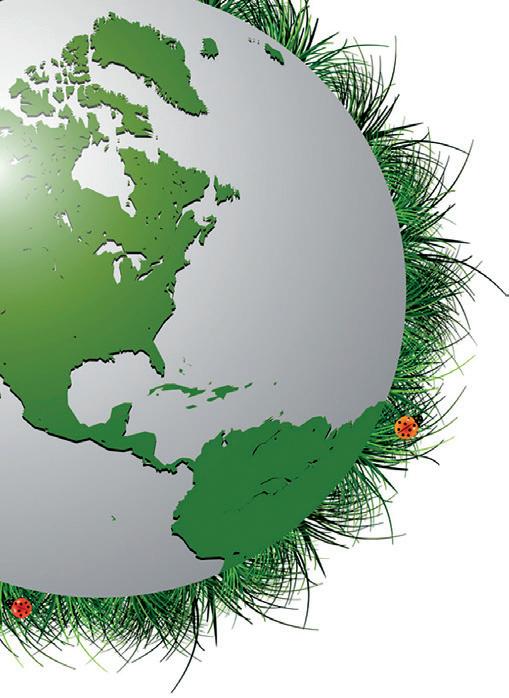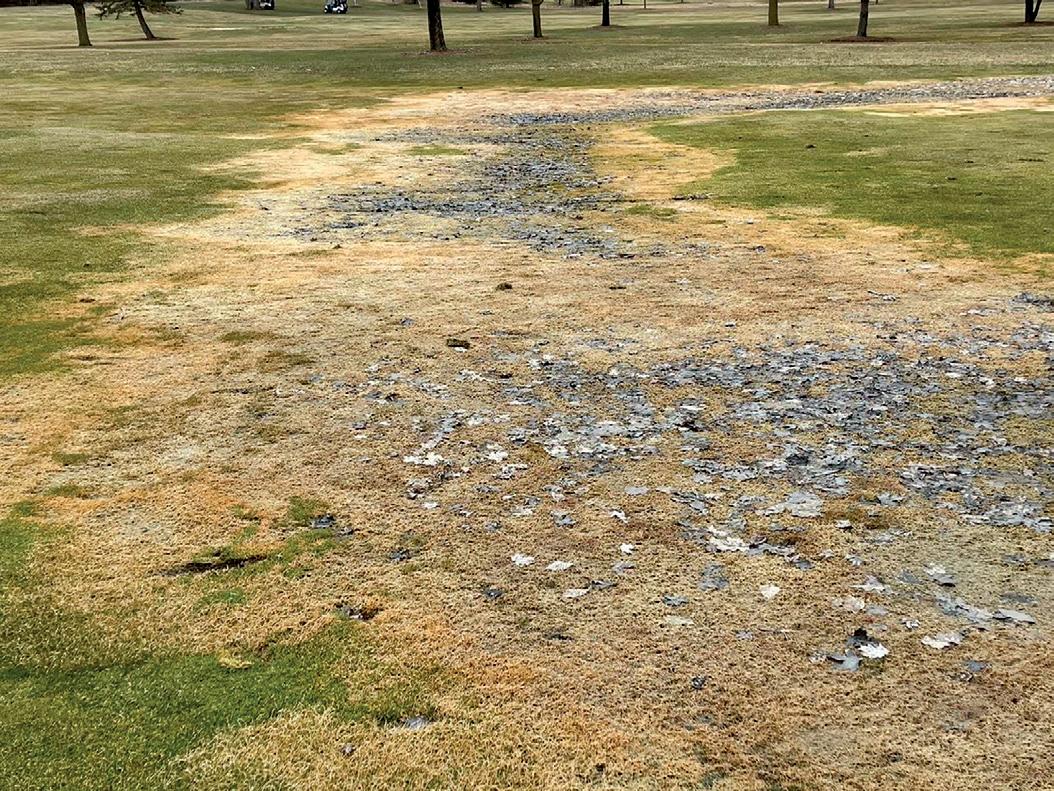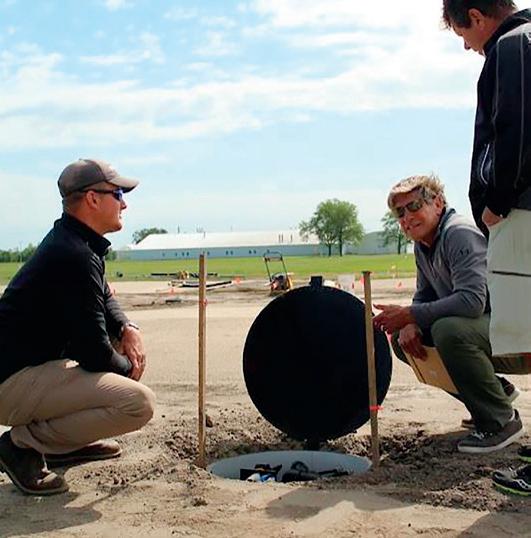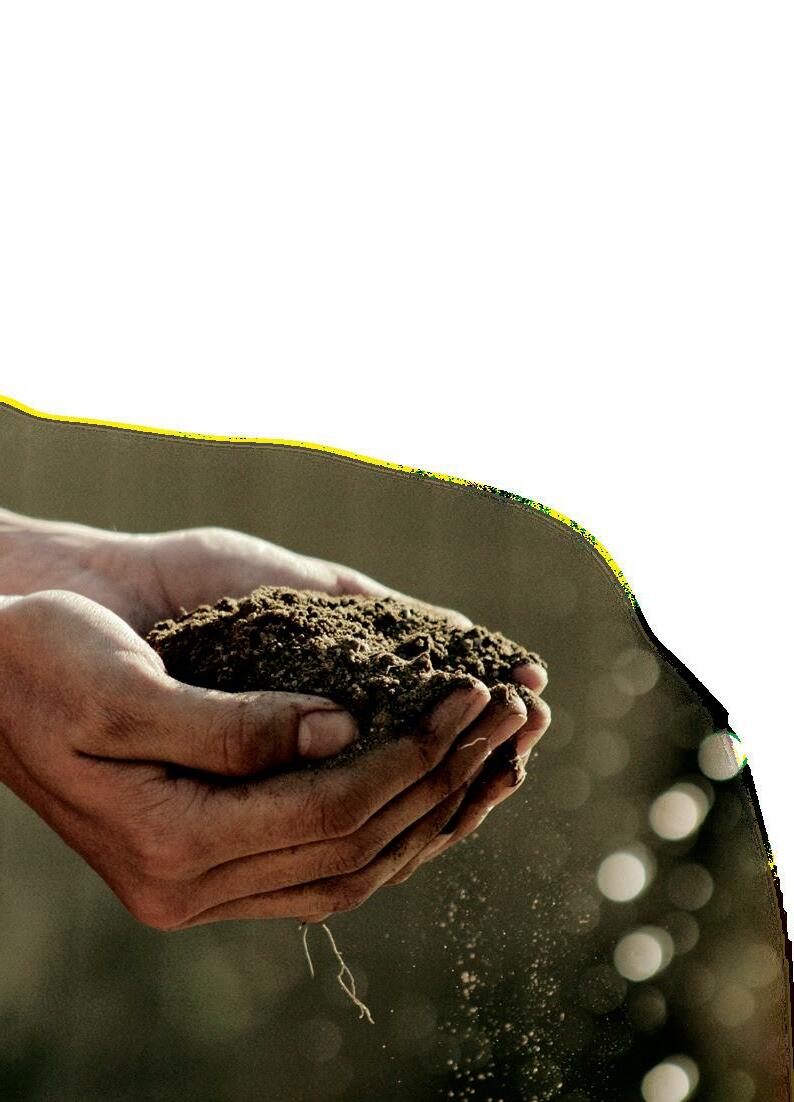
9 minute read
Research News x WinterTurf Data Collection - We Need Your Help! x 30-year utility player. Thomas A Nikolai PhD
WINTERTURF DATA COLLECTION We Need Your Help!
BY KEVIN FRANK, MICHIGAN STATE UNIVERSITY AND KRISTINE MONCADA AND ERIC WATKINS, UNIVERSITY OF MINNESOTA
Golf course superintendents around the world helped collect data last season for our WinterTurf Research Project (https:// winterturf.umn.edu/); we truly appreciate all the assistance these superintendents provided. In Michigan we had six golf courses with the sensor package in place. These sensors placed on one green tracked soil temperature, moisture, and gases. Thanks to the following Michigan superintendents for hosting the sensors:
Doug Hoeh, Treetops Resort Scott Pulaski, Walloon Lake CC Jim Bluck, Arcadia Bluffs Ryan Moore, Forest Lake CC Eric Davey, Prestwick Village Golf Club Drew Paxton, Spring Lake CC In addition to the sensor package, once again this winter we are looking for golf course superintendents to collect data throughout the winter. We need golf courses in addition to the courses that have the sensors in place. Last winter the following Michigan superintendents collected data throughout the winter:
Victor Morales-Rios, Leslie Park Golf Course Craig Moore, Marquette CC Zachary Gascoyne, El Dorado Golf Course Jared Milner, Meadowbrook CC Justin Peckens, The Majestic Ryan Moore, Forest Lake CC Scott Pulaski, Walloon Lake CC Eric Davey, Prestwick Village CC •
Map of golf courses participating in previous WinterTurf data collection efforts.

Goal of the project
We are collecting data on winter stress injury to help develop solutions to this serious problem that affects so many golf courses in northern regions all over the world. As part of our plan to find solutions, we need to collect data at as many sites as possible to capture all the most likely factors that are involved in winter injury.
Why participate again?
We hope those of you who did it in the past will consider continuing another year. Information from a single golf course in multiple years will help to strengthen our data set. The data collection process will be like last year with a few improvements based on suggestions from superintendents.
Winter stress damage at a poorly drained site. Photo by Kevin Frank.
What are we asking you to do? Why participate for the first time?
We also hope to recruit new golf courses because the amount of data needed is substantial for our project to be successful. Last year, we had 8 courses in Michigan submit a complete set of data. Although it’s a big goal, this year I’d love to see at least 50 superintendents in Michigan do this. We’ve worked for years to get this $8 million research project off the ground-we hope you will see the value of taking part in this important collaboration. If you haven’t joined, please consider it for this year. Search for #WinterTurf on Twitter and read participants’ tweets from last year and their experiences as inspiration. As one of the superintendents commented last year “The weekly survey was easy and smooth.”
We would appreciate any help you can provide to get the word out by forwarding this information to colleagues or promoting our #WinterTurf tweets (https://twitter.com/MSUTurf, https://twitter.com/ UMNTurf) through social media.

We are asking you to monitor 1-3 greens on your golf course throughout the winter. This will include taking some photos and notes about the green going into winter, then measuring snow depth on the green and making some general observations each week during the winter, and finally doing a final assessment after winter.
Does it matter if I use covers?
No! We want data on all types of greens under all kinds of management practices, including covers.
How to sign up?
The process is the same whether you helped collect data last year or are new this year: please complete
the survey linked
below and we will email you with further instructions when data collection starts later this year.
Sign up to be part of the WinterTurf data collection: https://z. umn.edu/interestsurvey
If you would like more information, visit our Be a part of the WinterTurf project! (https://winterturf.umn. edu/data-collection) webpage. Please contact our grant coordinator at the University of Minnesota, Kristine Moncada, at monc0003@umn.edu if you have questions.

30-year
utility player.
Hydroponic Green 2022 - Turf Center
Thomas A Nikolai PhD
Turfgrass Academic Senior Specialist
Igraduated from the MSU 2-year Turfgrass Management Program in 1986 under coordinator Dr. K.T. Payne. My fiancée had two years remaining to earn her bachelors at MSU and my classmates were astonished when I declined an offer to return to Oakland Hills Country Club where I performed my internship for the position of golf course superintendent (GCS) at a local public golf course near MSU.
We were married and following her graduation I accepted the position of GCS at Lakeview Hills Golf Course in Lexington, MI. I remained there until the fall of 89 when my wife’s commute to pursue her master’s degree became burdensome following the arrival of our first child. We returned to MSU and I decided to pursue my bachelor’s degree and earned a job working part time at the Hancock Turfgrass Research Center (HTRC).
I initially worked on the crew, but sometimes assisted Dr. Bruce Branham with research projects which included an experimental product called trinexapac ethyl. That led me to my first research project which I performed for undergraduate credits under the direction of Dr. John Rogers III. It was a PGR green speed study and as far as I know it was the first PGR green speed study.
I ended up taking a job with Dr. Paul Rieke working under his research technician and graduate student Mike Saffell. Research projects I worked on as a bachelor’s student included:
• Putting green topdressing studies. At the time most courses topdressed once or twice per year following core cultivation and many times with sand mixes including peat, soil, or Milorganite. • Using Time Domain Reflectometry (TDR) as a tool to measure water use in annual bluegrass and creeping bentgrass greens.
Under Mikes guidance we cut rods to a desired length to make our TDR probes, drilled holes in them, soldered them to wire and connected the wire to relay switches we buried in the ground and placed under valve boxes. It took us less than a month of data collection to realize that TDRs would significantly change golf course irrigation practices. • Mulching tree leaves into the turfgrass canopy instead of removing them with a rake to burn or bag. It was believed that mulching the leaves into the turf would be detrimental.
In spring of 1992 I earned my bachelor’s degree and took the position of assistant at Oak Point Country Club. It was a great opportunity working under GCS Tom Schall on an established golf course that was also adding 9 new holes. I didn’t think I would return to MSU but in June of 92 I received a phone call from Dr. Rieke. Mike had accepted a position with the USGA, and Paul asked if I would interview for the vacant research technician position. One of the main reasons I was interested in the position was I knew MSU would be involved in turfgrass research preparing for the 94 World Cup. That seemed too unique to pass up. World Cup research was headed by Dr. Rogers and results clearly advanced and stimulated sports field research in general. In any event, during my interview with Paul, he told me there were two negatives he heard about me that were, I didn’t like to work weekends and I wanted to be in charge. My response, “If anyone tells you they like to work weekends they are lying, but I have been working on golf courses for 10 years so whatever it takes to get the job done I will be there. Also, if you don’t want someone that wants to be in charge than don’t hire me”. Paul smiled, hired me, and allowed me to initiate my own research projects if I finished contractual projects first.
In 1993 I initiated lightweight rolling research on golf course putting greens. During that decade Penn State University and North Carolina also performed roller research, and both concluded the green speed increase was too short lived and cautioned rolling should only be practiced for up to two weeks prior to a significant golf tournament. MSU roller research focused on more than green speed observations and we discovered frequent rolling decreased numerous pests as well as localized dry spot. Due to those findings’ I created a niche and was funded by most every roller company and other metal companies including John Deere, Jacobson, Toro, and even Bernhard & Company.
In 1995 I initiated golf spike spike/cleat research with a $100.00 donation from the MTF in 1995. The money was used to purchase 3 pair of golf shoes. As a result, the MSU became the leader in golf cleat/sole design research that brought in over $250,000.00 in industry funding and led to the USGA funding research at the HTRC on the impact of cultural practices to reduce visible foot traffic.
In 1999 we started construction on alternative depth putting greens which proved to have a more uniform moisture retention compared to the flat underlying rootzone. In 2000 Dr. Rieke retired and Dr. Kevin Frank took his place. I became Dr. Franks technician but that was short lived when Dr. Rogers offered me the position of Academic Specialist. That changed my appointment from 100% research to 78% teaching and 22% research which obviously changed my focus.

A lot has changed over the years and numerous people have come and gone. When Greg Lyman departed for the GCSAA, I stepped in and taught “Turfgrass and the Environment”. When Dr. Ron Calhoun departed the industry, I took over weed research and co-taught an agriculture weeds class which was quite a stretch for my skill set. Fortunately, Aaron Hathaway was my weed research technician, however, after several years Aaron departed for industry, and I took over teaching “Pesticide and Fertilizer Technology”.
In the fall of 1994, the American Society of Agronomy meetings were held in Seattle, Washington. A bachelor’s student with aspirations of going to graduate school inquired if I thought it was a good idea to attend the meetings and network. I said yes, but the problem was he could not afford a room, so I let him sleep on the floor in mine. The student’s name was Brian Horgan and in 2019 Dr. Horgan became the Chair of Plant, Soil, and Microbial Sciences, or in other words, he is essentially my boss.
Not including my undergraduate years, I am currently in my 30th year of working at MSU performing turfgrass research. In reflection I have concluded that if I played baseball my position would have been utility player. Not big enough to be the starter focused on one position, but worth a spot in the line-up. I have enjoyed many shifts in emphasis but now I am focused on how to close out the game.










